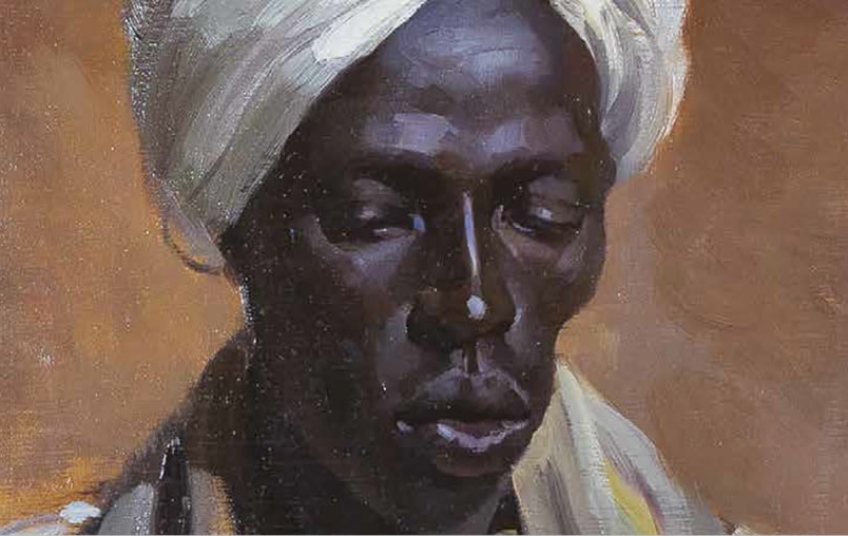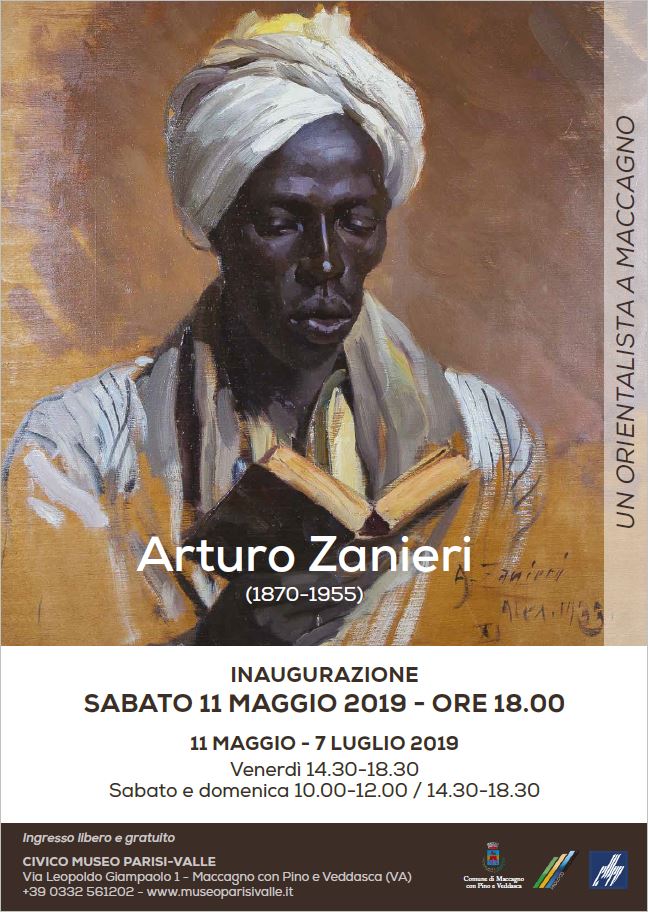The new exhibition opens on Saturday 11 May at the Parisi-Valle civic museum
Arturo Zanieri was born in Florence in 1870. He moved to Egypt in 1903, when the cosmopolitan port city of Alexandria was the hub of massive commercial activity.
"Arturo Zanieri (1870-1955). An Orientalist in Maccagno" is the title of the new exhibition hosted by the civic museum of Maccagno con Pino e Veddasca, curated by Federico Crimi and Marco Dozzio. It will be open to the public from 11 May through 7 July 2019.
The works on display reconstruct the personal and artistic life of an author who lived in Egypt for almost forty years and left a significant mark on the cultural life of Alessandria, and later tied his destiny and part of his artistic fortune to Maccagno and Lake Maggiore.
Numerous representations of the Egyptian society and portraits of the people of Alexandria, models of Arabs, views of both his native Tuscany and Egypt make up this exhibition, alongside an interesting series of portraits of people and views of Maccagno, Zanieri’s adoptive home town.
This exhibition features 56 works, 27 of which have never been displayed before. They showcase the artist’s oil painting technique, both on canvas and wood.
The works, coming mostly from private collections in the local area, are included – with comments - in the catalog available in the exhibition. These are accompanied by a large body of historical documents and photos that narrate Zanieri’s life and creative career, providing the reader with fascinating glimpses into the life of the Maccagnese society in the years between fascism and liberation.
Mayor Fabio Passera and delegate councilor for cultural events Alessandro Fazio explain: “The foundations of this exhibition were an accurate analysis, long historical studies and a meticulous biographical and cultural reconstruction. In these years we have repeatedly stated what we intended our museum to be: a tool to increase knowledge and to discover our area in all its aspects. In fact, we strongly believe that what culture truly means is the ability to interpret the world in we live in through the different disciplines created by artists, painting being undoubtedly one of the highest. Thanks to this new exhibition, it is now possible for us to review the first half of the twentieth century through the portraits by this tireless painter, who was able to capture the characteristic traits of our town’s people, giving us an intimate image of the most important families, as well as a general cross-section of our society ".
Clara Castaldo, in charge of cultural activities at the civic museum, says: "This new exhibition is yet another milestone: it is, in fact, our nineteenth exhibit since September 2015. That’s when we created together the artistic tribute in memory of Giuseppe Vittorio Parisi. Since then we have presented to the public retrospective exhibitions, large-scale exhibitions, or solo exhibits that focused on a particular artist. We also hosted complex and exciting historical rediscoveries such as the monumental fresco by Antonio da Tradate displayed in our museum for several months, central point of an exhibition focused on Late Gothic and Renaissance religious painting in the Prealps. We must also mention the exhibitions dedicated to new artists, or those dedicated to different materials such as ceramics, glass, photography, design, and watercolor: many diverse stories, many diverse protagonists. And the exhibition we are preparing to inaugurate is the result of the same enthusiasm for sharing culture and stories made of great creative and inventive skills. And our goals are the same, too: fully living and experiencing our territory and its communities.”
Federico Crimi and Marco Dozzio, curators of this anthology, explain that the artist knew how to cleverly divide his time between the royal palace in Cairo and the districts of Alexandria in Egypt: “A slice of cake, a prime cut of meat, mending his Sunday suit... apparently, this is all Arturo Zanieri asked in return for the products of his art. He was generous by nature and was not beset by economic problems. Within the limited radius of a handful of houses, he found in Maccagno great diversity and, picture by picture, he succeeded in completing a new, comprehensive social fresco. His subjects were the butcher, the carpenter, the tailor, the dialect poet, the general, the commander of the Guardia di Finanza, the vacationers, etc, with their children, grandchildren and spouses. All of them posed for him, almost a group photo in small Alexandria of Egypt on the Verbano banks.
They add: "This is not just a ploy to stimulate the public’s interest in the Middle East, since it never vanished. In fact, Zanieri’s Egyptian body of work is now as interesting as ever and gives a new perspective on his work and his life that found new inspiration on the banks of the Nile. His art’s main peculiarity was the way he rendered on the canvas the multifaceted shades of skin and eyes: he was a master at this, as he was when it came to representing precious fabrics and jewels for the summit of the Egyptian social pyramid. He had an impressive ability to capture the most subtle variations under any kind of light, from the studio’s artificial light to the blinding Egyptian sun”.
The catalog also includes a historical and critical follow-up by Nadia Radwan, a professor at the University of Bern who says: "Besides his portraits of the high society, in an Orientalist approach, Zanieri strived to represent the exoticism of his Egyptian experience by capturing the singular features and expressions of the people in his portraits of street sellers, Bedouins, Sudanese beggars and Nudes of Egyptian women. His pupils included the poet, writer and art critic Ahmed Rassim (1895-1958), Princess Samiha Hussein (1889-1984), who was an art patron and the granddaughter of khedive Ismaïl, and the painter Mahmoud Saïd (1897-1964), who would later become one of the most prominent figures of Egyptian modernism".
“Arturo Zanieri (1870-1955). An Orientalist in Maccagno”
Inauguration: Saturday, 11 May 2019 at 6:00 pm
Opening hours: Fridays from 3.00 to 7.00 pm
Saturday and Sundays: from 10:00 am to 12:00 pm / from 3:00 pm to 7:00 pm
Free admission
CIVICO MUSEO PARISI-VALLE
via Leopoldo Giampaolo 1 - Maccagno con Pino e Veddasca (VA)
+39 0332 561202 - www.museoparisivalle.it
Alcune delle opere esposte
https://www.museoparisivalle.it/en/the-exhibits/arturo-zanieri-1870-1955-an-orientalist-in-maccagno?tmpl=component&print=1&layout=default#sigProId415be4197a
Locandina mostra (click per ingrandire)


